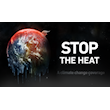US recycling only 5% of plastic waste
According to a new report, 85% of the plastic ends up in landfills.
-

US recycling only 5% of plastic waste
The recycling rate for post-consumer plastic in 2021 in the United States will be only 5% to 6%, according to a report by the Last Beach Cleanup and Beyond Plastics group.
The Department of Energy also issued a study paper this week that evaluated data from 2019 and came to the same conclusion: barely 5% of plastics in the US are recycled. According to a press release, the researchers of that report wrote that landfilled plastic waste in the United States has been on the rise for a variety of reasons, including "low recycling rates, population growth, consumer preference for single-use plastics, and low disposal fees in certain parts of the country."
Changes in the global recycling market, such as China's 2017 ban on most US plastic exports, have significantly aggravated the situation.
According to Jan Dell, creator of the Last Beach Cleanup, countries such as China used to take ships full of plastic debris from the United States, but without that option, more plastic is thrown away because few US facilities have the ability to recycle it.
Dell stated that the rate of recycling has "never" been at 4% to 5%, adding that “We don’t have factories to do it. It’s also very water-intensive, so we’re not going to build more plastic recycling facilities in the US.”
According to Dell's study, around 85% percent of plastics wind up in landfills, with the remaining 10 percent being burnt. Even when plastics are recycled, around one-third of the material from a PET plastic bottle is wasted.
Findings from the Last Beach Cleanup and Beyond Plastics study indicate that while plastic recycling is declining, the output of plastic garbage per person in the US has grown by 263 percent since 1980, from 60 pounds to 218 pounds per person.
In the world of recycling, plastic is the most harmful culprit, while paper is recycled at 66 percent, according to the American Forest and Products Association, and aluminum cans are recycled at around 50.4% according to the EPA.
Dell says “We can’t stay in the single-use plastic nightmare scenario that we are right now. There’s no way to sort our way out of this without reducing waste to start with.”
Read more: 75% of world's population want single-use plastic banned
Dell argues that there are alternatives to single-use plastics, such as fiber-based food trays that can be composted or recycled. Nestle, she claims, has replaced plastic with paper on confectionery in the UK, a process known as "paperification." Of course, reusing and refilling bottles rather than discarding them after use is also beneficial.
She goes on to say that plastic manufacturers have been quite deceitful in putting the triangle "chasing arrows" form on the bottom of objects, causing consumers to believe they are recyclable when, in reality, the symbol does not ensure that.
“They have co-opted America’s love of recycling and the thought that we are doing something good for the environment, when they knew all along it wasn’t recycling."
Single-use plastic bags, food containers, and utensil bans are becoming increasingly popular, with variations implemented in areas such as the European Union, the state of California, and Los Angeles.
However, such regulations, according to the report, must be intensified.
“Proven solutions that will reduce US plastic waste and pollution already exist and can be swiftly enacted. The success of single-use plastic bans, water refilling stations, and reusable food and dishware can be extended nationwide.”

 4 Min Read
4 Min Read









